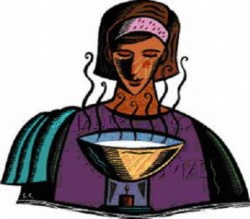Aromatherapy
Aromatherapy is a word coined in the 1920’s by Rene Gattefosse to refer to physical and psychological healing through inhaling the vapours of essential oils or having them applied to the body. The ancient Indians had developed the science of fragrances to a very high degree.
Scents were extracted from ‘aromatic roots, wood, bark, shoots, leaves, flowers, berries and gums’ (S.III,250) and perfumeries (gandhāpaṇa) sold ‘perfumes, incense, aromatic powders and camphor’ (Ja.I,290). People enjoyed ‘rubbing and massaging of the body with perfume and bathing in scented water’ (D.I,7).
Sometimes they were administered enemas of perfumed oils (Mil.169). The therapeutic value of aromas was also understood, although aromatherapy as such was not included in the traditional eight branches of Indian medicine.
Once when the Buddha was ill, his doctor prescribed sniffing (upasinghati) three hands full of water lilies (Vin.I,279). He himself recommended that monks suffering from bodily aches and pains,inhale the steam from cannabis leaves boiled in water (Vin.I,204).
Although the effects of aromatherapy on physical illnesses have yet to be verified by science, there seems little doubt that it can have a positive effect on the mind. Sweet, spicy or woody fragrances can lift the mood, calm the mind and, thus, make relaxation easier.
This is probably an additional reason why the ancient Buddhists used flowers and incense in the pūjās they did before their meditation. See Perfumes.
